As kids they splashed in the bubbles. Then these sisters got the same one-in-a-million tumour
There are burning questions about the health effects of the “forever chemicals” that are in us all.
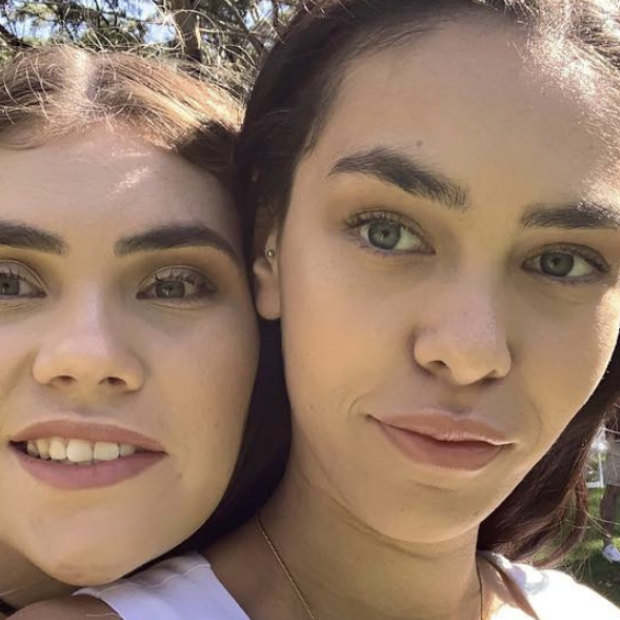
Skye and Jade Sturgeon come from a close-knit family in the Aboriginal village of Wreck Bay.
Aboriginal and Torres Strait Islander readers are advised that this article contains the names of people who are deceased.
Skye Sturgeon was told to call off her 21st birthday celebrations when her tumour returned. Instead, she spent the milestone learning to walk, talk and eat again after surgeons carved away the growth wrapped in nerves on her brain stem.
At first, Sturgeon was inconsolable. The gruelling recovery from her first brain surgery when she was 18 had “wrecked” her. But she steeled herself for what lay ahead.
“I would rather it happen to me than to anyone else because I knew that I could do it,” she recalled.
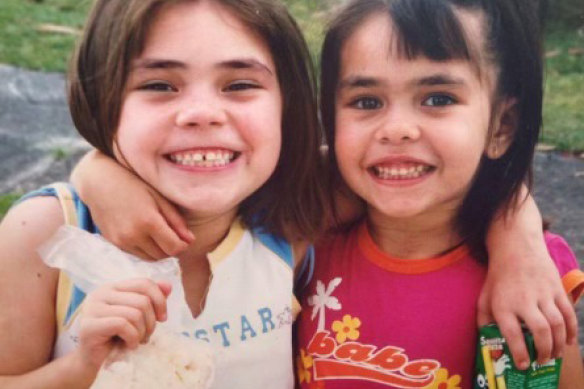
Skye and Jade Sturgeon.
Skye and her younger sister, Jade, had spent an idyllic childhood playing together on the pearly white sands of Jervis Bay, their home town and a NSW tourist mecca. They were oblivious to something sinister lurking beneath its picture-perfect facade.
During high school, Jade began complaining of symptoms that were eerily similar to Skye’s – migraines, muffled hearing, a loss of balance that led to her keeling over in the supermarket aisle.
“I was like, ‘Do I have a brain tumour?’ And the doctors were like, ‘No, that’s impossible’,” Jade recalled. “Because of what your sister went through, maybe you’re just scared that the same thing’s going to happen to you, but it’s impossible.”
The odds of Skye developing the type of tumour she did at her age were roughly 1.5 in a million. The chances two sisters with no family history of brain cancer would both fall on the wrong side of those statistics were infinitesimally small.
But Jade’s condition deteriorated dramatically over the next few years before she was sent for an MRI scan in 2022 at the age of 23. Lightning had struck not once, but twice. Jade had the same type of tumour as Skye, but on both sides of her brain.
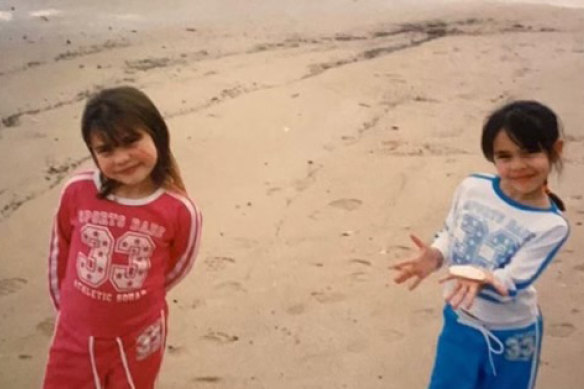
Skye and Jade Sturgeon spent nearly every day in the water as children.
“I think that broke my heart the most,” Skye said.
“Everyone was in shock when they found out about Jade. Some of them thought it was me again, and I was like ‘No, no, no, it’s my sister.’ ”
Now, the shellshocked Aboriginal sisters find themselves at the forefront of an international chemical contamination scandal.
They now know the creeks and waterways that were their safe haven as youngsters were poisoned with invisible “forever chemicals” pollution.
They are among an unlucky cohort of young people on opposite sides of the globe who have grown up within contamination plumes and have the same burning question: did forever chemicals cause my tumour?
A new Stan documentary, How to Poison a Planet, documents the heartache of those families after forever chemicals in firefighting foam contaminated thousands of communities worldwide, from the secluded Aboriginal village of Wreck Bay to the town of Oakdale, Minnesota, in America’s Midwest.
In 2018, this masthead uncovered 21 cancer cases from an Oakdale high school where the drinking water was contaminated with high levels of forever chemicals, including six cases of brain tumours.
A researcher found children who died in Oakdale were 171 per cent more likely to have had a cancer diagnosis than children who died in areas unaffected by the contamination.
Forever chemicals – per- and poly-fluoroalkyl chemicals (PFAS) – are also found at low levels in hundreds of everyday household products and in the blood of 98 per cent of the world’s population.
Last year, this masthead revealed that in the early 2000s the average Australian adult had one of the most notorious forever chemicals in their blood at 20 times the “safe level” secretly calculated by a scientist working for one of the manufacturers.
The toxic tide
For generations, the tides of soapy white suds that would drift down the creeks in Wreck Bay were welcome playthings to children like Skye and Jade Sturgeon.
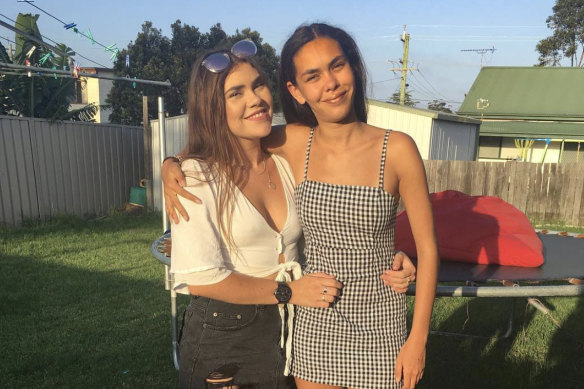
Skye and Jade share a close bond.
“Kids, bubbles, foam, it was exciting. And obviously, it wasn’t good,” Skye said.
The pair would also hunt for pippies along the shoreline and bask in clay holes, rich ochre hiding a terrible secret.
The Aboriginal community in Jervis Bay, 200 kilometres south of Sydney near the internationally recognised sands of Hyams Beach, was slowly being poisoned.
Forever chemicals in firefighting foam were leaching off a neighbouring naval base and into the community’s food and water supply.
By the time they reached young adulthood, Skye and Jade Sturgeon would both be diagnosed with a benign type of tumour called a meningioma, which form in the layers of tissue surrounding the brain.
The tumours are rarely seen in children and most commonly strike people between 40 and 70 years old. Doctors have been searching for a hereditary link that could explain the sisters’ misfortune, but genetic testing has so far drawn a blank.
“We were in shock and they’re looking at us in shock,” said their mother, Eileen McLeod, recalling the moment doctors discovered both sisters had the same type of tumour.
“They said you hear of it in generations, but not with two sisters.
“I asked how and why did this happen? In your profession, you should know. They shook their head and said ‘we are dumbfounded’,” McLeod recalled.
It was another setback for a family that had already endured too much grief. Eileen was diagnosed with cervical cancer in 2004, the same year her softly spoken sister, Vicki McLeod, died from breast cancer at the age of 40.
Last year, this masthead revealed Wreck Bay has some of the highest rates of premature loss of life in Australia.
“I’ve pretty much always said I’ve been to more funerals than I’ve ever been to weddings,” Skye said.
Conversations with doctors about the cause of their tumours have only raised more questions.
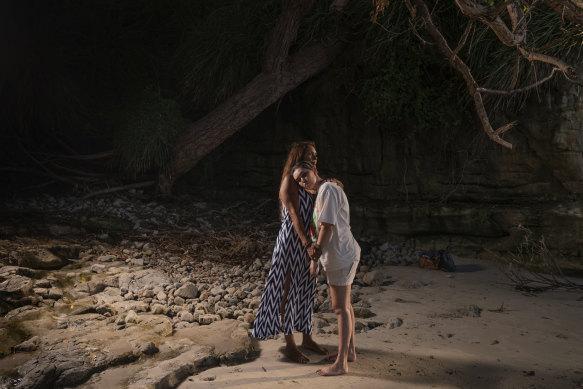
Jade Sturgeon with her mother, Eileen McLeod, on the shores of Back Beach at Wreck Bay. Credit: Rhett Wyman
At one stage, doctors queried if the sisters could remember anything they were both exposed to while they were together.
“Anything she was ever exposed to I was exposed to as well because we were inseparable,” Jade said. “We slept in the same bed.”
Jade recalled the doctors quizzing her about where she was from and telling them the family lived in Jervis Bay.
“They’ll look at me again and be like, ‘Do you know about PFAS?’ ” Jade says in the documentary.
Today, both women are still grappling with the brutal side effects of treatment.
They have suffered from facial palsy, a weakness of the facial muscles resulting from nerve damage, can’t close their eyes fully, have memory loss and struggle with eating and drinking normally.
After 13-hour surgery, Jade developed an ulcer on her eye, a burst appendix and lost the ability to speak midway through a telephone conversation with her father. Her speech was gone for three days.
When she talked again, her neurosurgeon had to leave the room to hide his tears.
“I thought I broke you,” he later said to her.
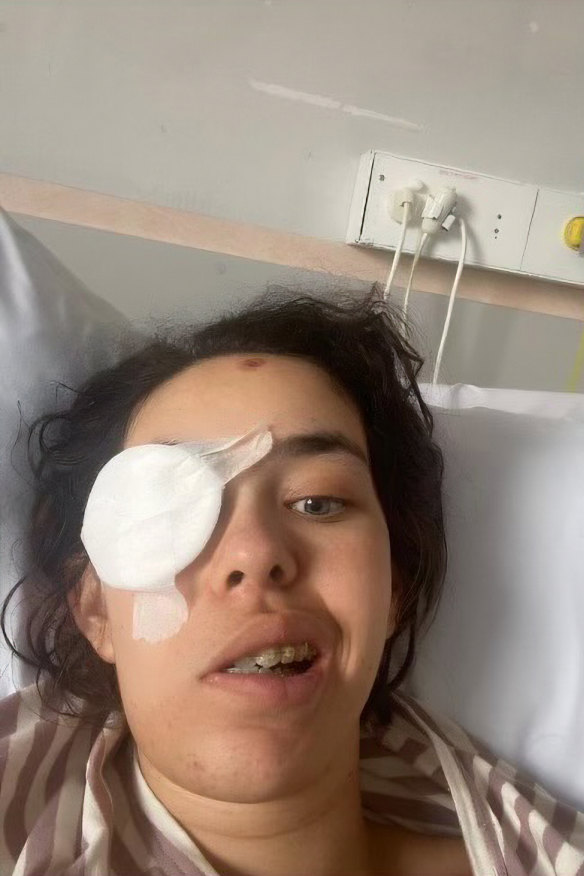
Jade suffered an ulcer on her eye after her meningioma was removed.
Both sisters underwent 30 sessions of radiation. They can’t forget the nauseating smell that reminded them of burning hair in the sessions, in which they were pinned to a table with their head encased in a mask to keep it from moving a millimetre. The smell, which is actually ozone gas, is more likely to be detected by young people.
“Even if you have an anxiety attack with the mask, you have to wait until they unscrew you from the table,” Jade said.
“I lost heaps of my hair and it still hasn’t grown back.”
‘Too strange to believe’
Rates of meningiomas in young and middle-aged people have been increasing significantly in the United States. Scientists have made links to radiation exposure, as well as a condition called neurofibromatosis, but otherwise the causes are poorly understood.
It’s a mystery that also confounds a father who spent years in another Australian town heavily polluted with forever chemicals who had elevated levels in his blood for many years.
The man did not want to be identified out of concern for the privacy of his son, who spent his infancy in the heart of the contamination plume.
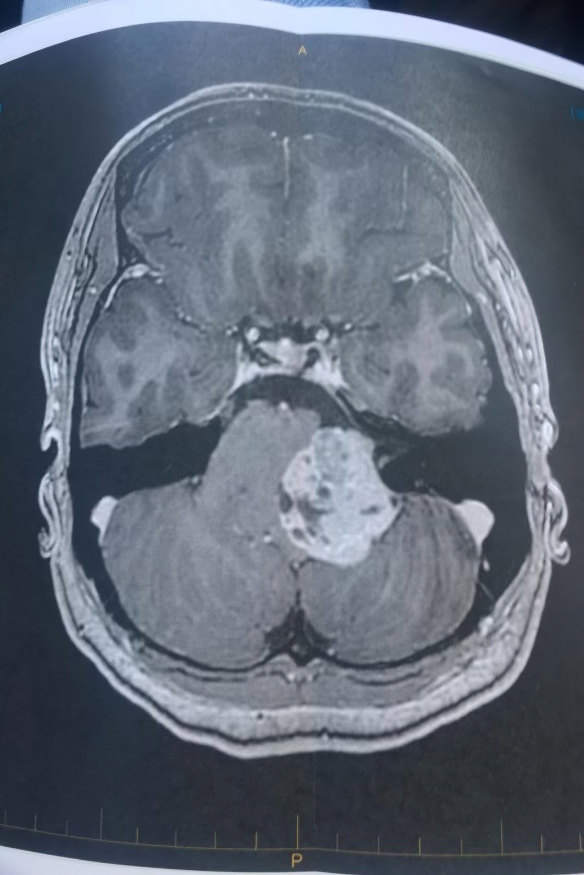
A scan showing a meningioma.
As a teenager, the son started suffering seizures and a large meningioma was discovered in his brain. Surgeons removed it but it has left him with debilitating side effects.
Doctors said the tumour must have been growing for many years to have reached the size it did.
“I’ve tortured myself over the years with the fact that we allowed him to go all those years with this thing in his head,” said the father. “It’s very traumatising, honestly.”
The family had no history of meningiomas, so when the father learnt of their exposure to forever chemicals, his suspicions were immediately aroused. He became even more concerned when another friend from the same area developed a meningioma.
Like the Sturgeons, doctors emphasised how rare the tumour was in young people.
“They basically just put it down to, ‘Well it happens sometimes’,” the father recalled.
“To have these sorts of illnesses when you live a pretty healthy lifestyle is too strange to believe. It’s too much of a coincidence for me.”
The United States and the European Union have linked forever chemicals to certain types of cancer, suppression of the immune system, high cholesterol and disruption of hormones.
The Australian government denies the chemicals cause “important” health effects, and the Department of Defence has made no admissions in regards to health effects in legal settlements it has reached with polluted communities, which have only covered devaluation of land, mental anguish and harm to cultural practices.
World-first study
There is a paucity of information on the effects of forever chemicals in children.

Both the Sturgeon sisters have undergone brain surgery to remove meningiomas.
This masthead was able to locate two relevant studies, including a 2023 Finnish paper which found women who had elevated levels of forever chemicals during pregnancy were more likely to have offspring who developed leukaemia.
In 2020, Shanghai researchers also found elevated concentrations of forever chemicals in children diagnosed with germ cell tumours that they speculated may have arisen from household exposure to PFAS.
Studies in Italy and China have shown that PFAS can accumulate in the brains of humans and animals.
That was a point noted by the Philadelphia Inquirer last year in its investigation into the deaths of six former Philadelphia Phillies players from brain cancer. All had played on the same artificial turf that was contaminated with forever chemicals.
One of the world’s most prestigious universities – the University of California in Berkeley – has recently been awarded funding to undertake the first wide-ranging study of PFAS and cancer risk in children, examining rates of leukaemia, rhabdomyosarcoma, lymphoma and cancers of the brain, nervous system, kidney, testes and thyroid.
“Despite several reports of childhood cancer clusters in PFAS-contaminated areas and potentially higher body burdens in children compared to adults, no studies have systematically assessed cancer risk in children,” the project summary said.
“We propose to conduct the first study of PFAS and cancer in children by integrating the expertise of investigators from four institutions.”
These days the Sturgeon sisters are resolute: they’re determined to move on with life and often trade jokes about their ordeal.
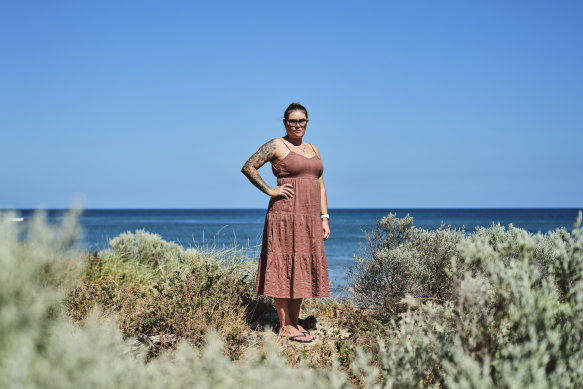
Skye Sturgeon, along with her sister Jade, has lingering questions about the health effects of forever chemicals. Credit: Duncan Wright
But the question of forever chemicals lingers in their minds.
“It makes your head think, is this what’s been causing all of this, is this why we’ve lost so many people, what’s going on?” Skye said.
“Someone needs to be held accountable for it.”
Revealed: How To Poison A Planet now streaming, only on Stan.
Start the day with a summary of the day’s most important and interesting stories, analysis and insights. Sign up for our Morning Edition newsletter.